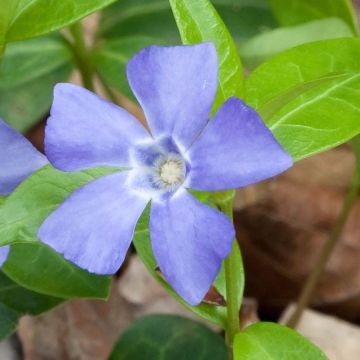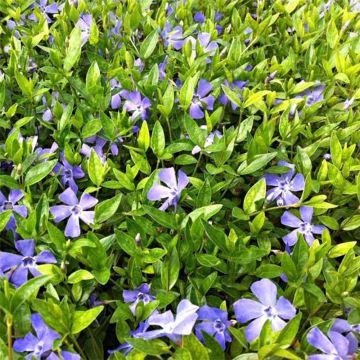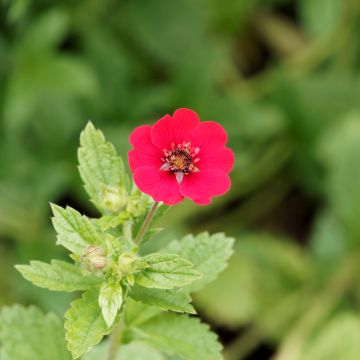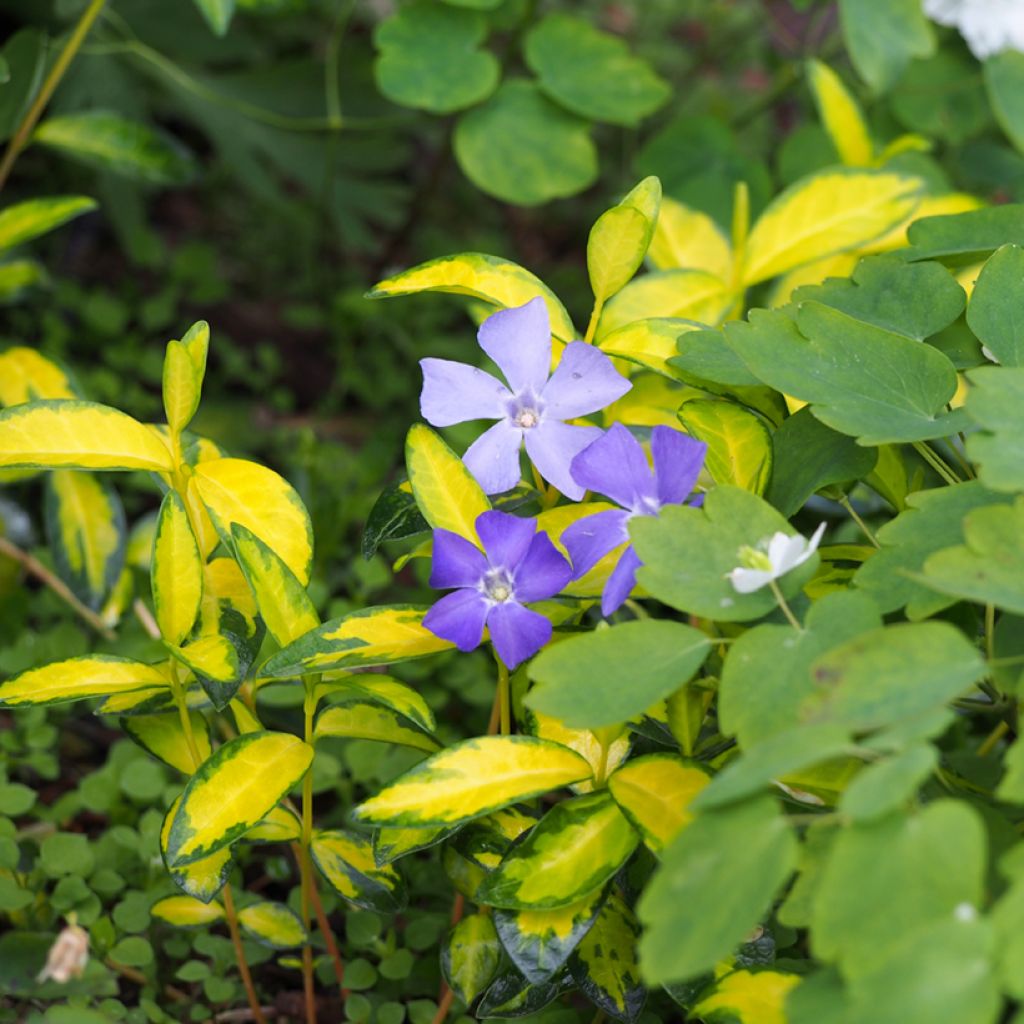

Vinca minor Illumination
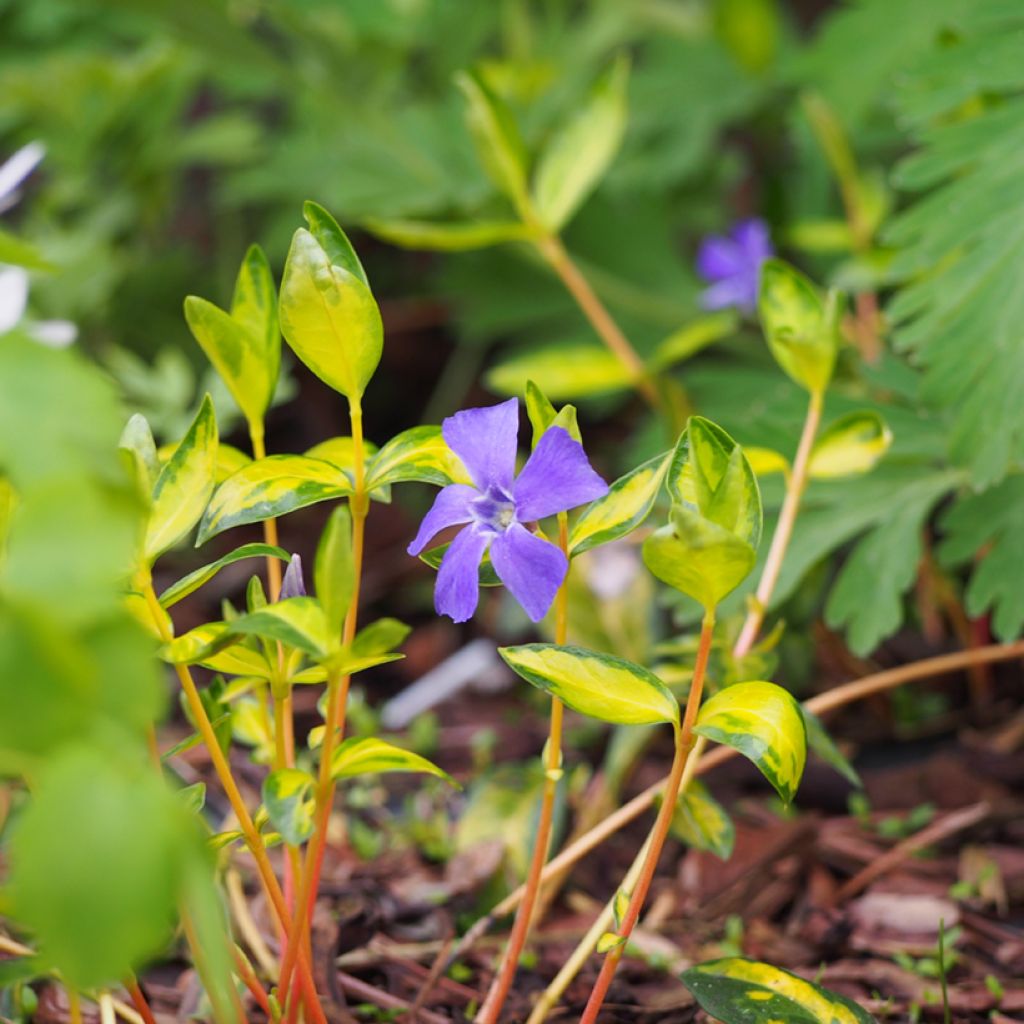

Vinca minor Illumination
Vinca minor Illumination
Vinca minor Illumination
Lesser periwinkle, Dwarf periwinkle, Common periwinkle
This item cannot be shipped to the selected country
Delivery charge from €5.90
Delivery to Corse prohibited
More information
Schedule delivery date,
and select date in basket
This plant carries a 12 months recovery warranty
More information
We guarantee the quality of our plants for a full growing cycle, and will replace at our expense any plant that fails to recover under normal climatic and planting conditions.
From €5.90 for pickup delivery and €6.90 for home delivery
Express home delivery from €8.90.
Delivery to Corse prohibited: UE law prohibits the import of this plant from mainland France to Corse as part of the fight against Xylella fastidiosa. Please accept our sincere apologies.
More information

Does this plant fit my garden?
Set up your Plantfit profile →
Description
Vinca minor 'Illumination' is an astonishing small periwinkle with a trailing habit, developing long flexible stems covered with small evergreen leaves variegated with light yellow and margined with green, which is quite unusual. It blooms abundantly in spring, with small blue star-shaped flowers. Its slightly bushy growth will enthusiastically cascade from hanging baskets or creep between the roots of trees, even in poor soil and full sun.
The lesser periwinkle is a creeping perennial with woody stems from the Apocynaceae family, native to central and southern Europe. 'Illumination' stands out for its curiously trailing habit and its bright and original variegated foliage. This plant develops from a woody climbing stem, producing first erect and then trailing stems, forming a dense trailing clump that reaches 20 cm (8in) in height and 60 cm (24in) or more in width. When in contact with the ground, the stems produce vigorous roots that allow the plant to continue its lateral growth. The stems bear opposite, ovate leaves, mostly cream-coloured in the center, irregularly margined with green. This variety blooms in April-May, producing characteristic solitary terminal flowers with a violet-blue colour, composed of five square-shaped, asymmetrical petals.
Periwinkles are useful, sometimes invasive ground covers. They will even spread in shaded areas, although they may be slightly less floriferous. They eventually form thick intermingled mats, effectively covering the ground under trees or bushes, not fearing their roots, in rockeries or along pathways. 'Illumination' is a variety particularly suitable for growing in hanging baskets. It can be paired with the silvery drapes of Dichondra 'Silver Falls'. It also naturalises quite easily in partial shade, in the company of Acanthus mollis, Geranium sanguineum, Geranium Czakor, or Ivy-leaved toadflax (Cymbalaria muralis), in a slightly wild understory. The 'Gloire de Marengo' ivy, with its fabulous cream-variegated grey-green leaves, will form a beautiful combination with Vinca minor 'Illusion' in regions with mild winters.
Report an error about the product description
Vinca minor Illumination in pictures




Flowering
Foliage
Plant habit
Botanical data
Vinca
minor
Illumination
Apocynaceae
Lesser periwinkle, Dwarf periwinkle, Common periwinkle
Cultivar or hybrid
Other Vinca - Periwinkle
Planting and care
Periwinkles grow in any type of damp soil in winter, in spring, and are more beautiful in soil that does not dry out, even though they tolerate summer drought perfectly and do not require watering. They thrive in all exposures, with a preference for partial shade. They tolerate limestone and poor soils perfectly. If they become too invasive, prune the stems at the end of winter to limit their growth.
Planting period
Intended location
Care
-
, onOrder confirmed
Reply from on Promesse de fleurs
Spring flowering perennials
Haven't found what you were looking for?
Hardiness is the lowest winter temperature a plant can endure without suffering serious damage or even dying. However, hardiness is affected by location (a sheltered area, such as a patio), protection (winter cover) and soil type (hardiness is improved by well-drained soil).

Photo Sharing Terms & Conditions
In order to encourage gardeners to interact and share their experiences, Promesse de fleurs offers various media enabling content to be uploaded onto its Site - in particular via the ‘Photo sharing’ module.
The User agrees to refrain from:
- Posting any content that is illegal, prejudicial, insulting, racist, inciteful to hatred, revisionist, contrary to public decency, that infringes on privacy or on the privacy rights of third parties, in particular the publicity rights of persons and goods, intellectual property rights, or the right to privacy.
- Submitting content on behalf of a third party;
- Impersonate the identity of a third party and/or publish any personal information about a third party;
In general, the User undertakes to refrain from any unethical behaviour.
All Content (in particular text, comments, files, images, photos, videos, creative works, etc.), which may be subject to property or intellectual property rights, image or other private rights, shall remain the property of the User, subject to the limited rights granted by the terms of the licence granted by Promesse de fleurs as stated below. Users are at liberty to publish or not to publish such Content on the Site, notably via the ‘Photo Sharing’ facility, and accept that this Content shall be made public and freely accessible, notably on the Internet.
Users further acknowledge, undertake to have ,and guarantee that they hold all necessary rights and permissions to publish such material on the Site, in particular with regard to the legislation in force pertaining to any privacy, property, intellectual property, image, or contractual rights, or rights of any other nature. By publishing such Content on the Site, Users acknowledge accepting full liability as publishers of the Content within the meaning of the law, and grant Promesse de fleurs, free of charge, an inclusive, worldwide licence for the said Content for the entire duration of its publication, including all reproduction, representation, up/downloading, displaying, performing, transmission, and storage rights.
Users also grant permission for their name to be linked to the Content and accept that this link may not always be made available.
By engaging in posting material, Users consent to their Content becoming automatically accessible on the Internet, in particular on other sites and/or blogs and/or web pages of the Promesse de fleurs site, including in particular social pages and the Promesse de fleurs catalogue.
Users may secure the removal of entrusted content free of charge by issuing a simple request via our contact form.
The flowering period indicated on our website applies to countries and regions located in USDA zone 8 (France, the United Kingdom, Ireland, the Netherlands, etc.)
It will vary according to where you live:
- In zones 9 to 10 (Italy, Spain, Greece, etc.), flowering will occur about 2 to 4 weeks earlier.
- In zones 6 to 7 (Germany, Poland, Slovenia, and lower mountainous regions), flowering will be delayed by 2 to 3 weeks.
- In zone 5 (Central Europe, Scandinavia), blooming will be delayed by 3 to 5 weeks.
In temperate climates, pruning of spring-flowering shrubs (forsythia, spireas, etc.) should be done just after flowering.
Pruning of summer-flowering shrubs (Indian Lilac, Perovskia, etc.) can be done in winter or spring.
In cold regions as well as with frost-sensitive plants, avoid pruning too early when severe frosts may still occur.
The planting period indicated on our website applies to countries and regions located in USDA zone 8 (France, United Kingdom, Ireland, Netherlands).
It will vary according to where you live:
- In Mediterranean zones (Marseille, Madrid, Milan, etc.), autumn and winter are the best planting periods.
- In continental zones (Strasbourg, Munich, Vienna, etc.), delay planting by 2 to 3 weeks in spring and bring it forward by 2 to 4 weeks in autumn.
- In mountainous regions (the Alps, Pyrenees, Carpathians, etc.), it is best to plant in late spring (May-June) or late summer (August-September).
The harvesting period indicated on our website applies to countries and regions in USDA zone 8 (France, England, Ireland, the Netherlands).
In colder areas (Scandinavia, Poland, Austria...) fruit and vegetable harvests are likely to be delayed by 3-4 weeks.
In warmer areas (Italy, Spain, Greece, etc.), harvesting will probably take place earlier, depending on weather conditions.
The sowing periods indicated on our website apply to countries and regions within USDA Zone 8 (France, UK, Ireland, Netherlands).
In colder areas (Scandinavia, Poland, Austria...), delay any outdoor sowing by 3-4 weeks, or sow under glass.
In warmer climes (Italy, Spain, Greece, etc.), bring outdoor sowing forward by a few weeks.







































